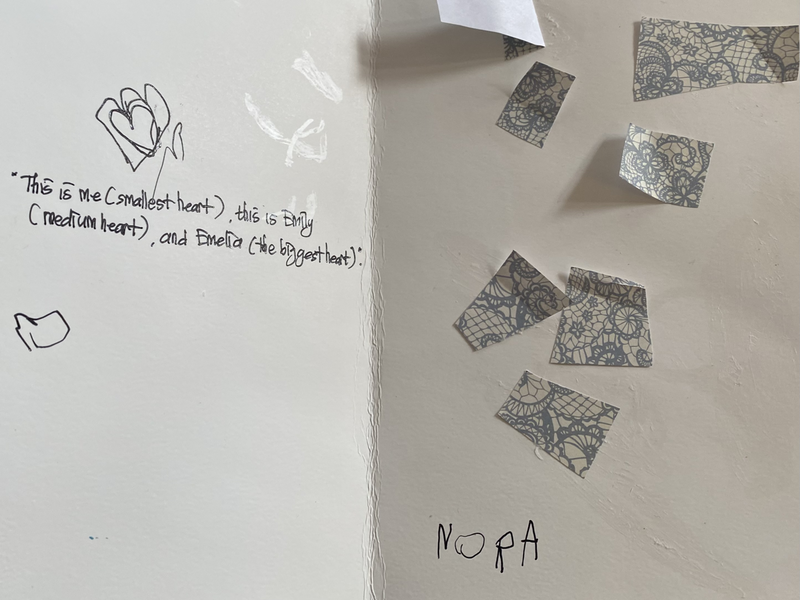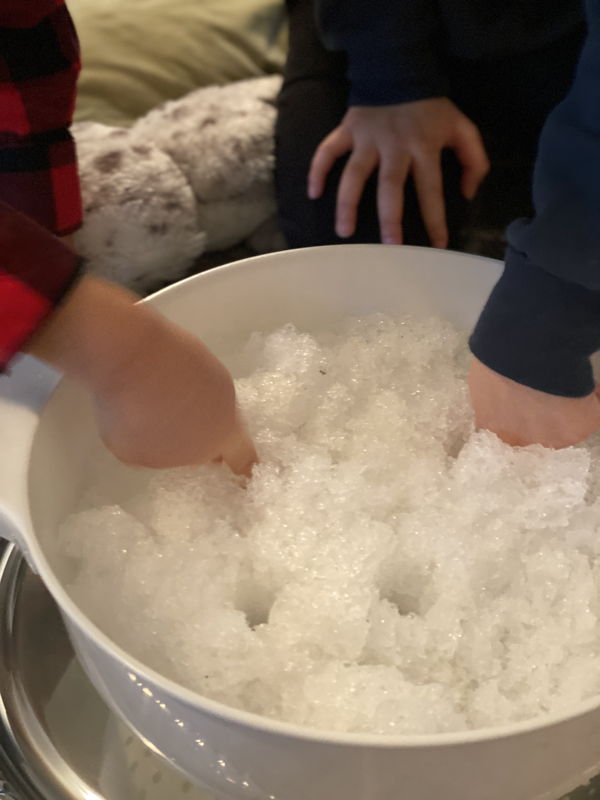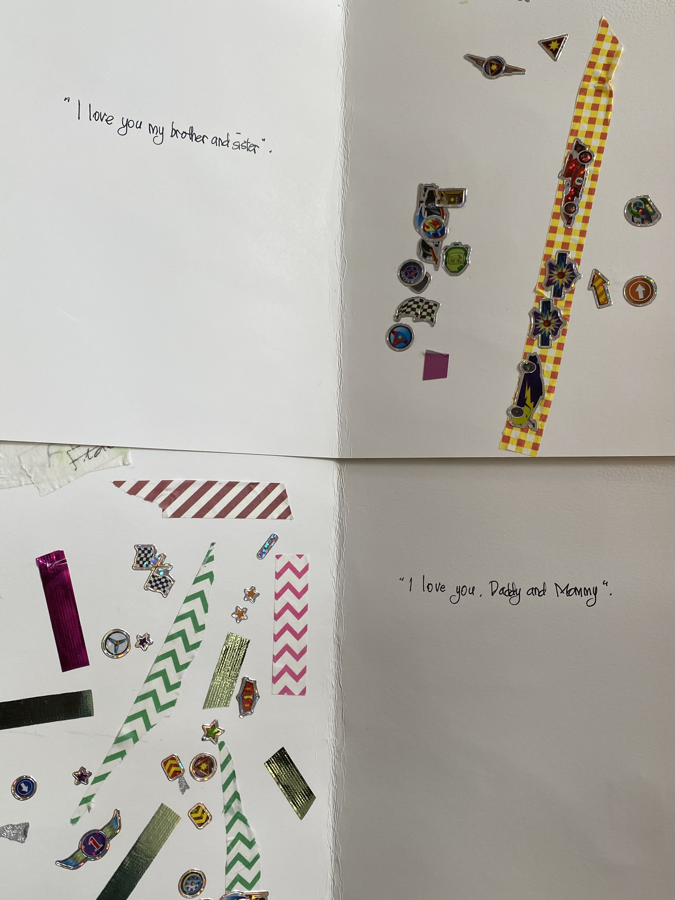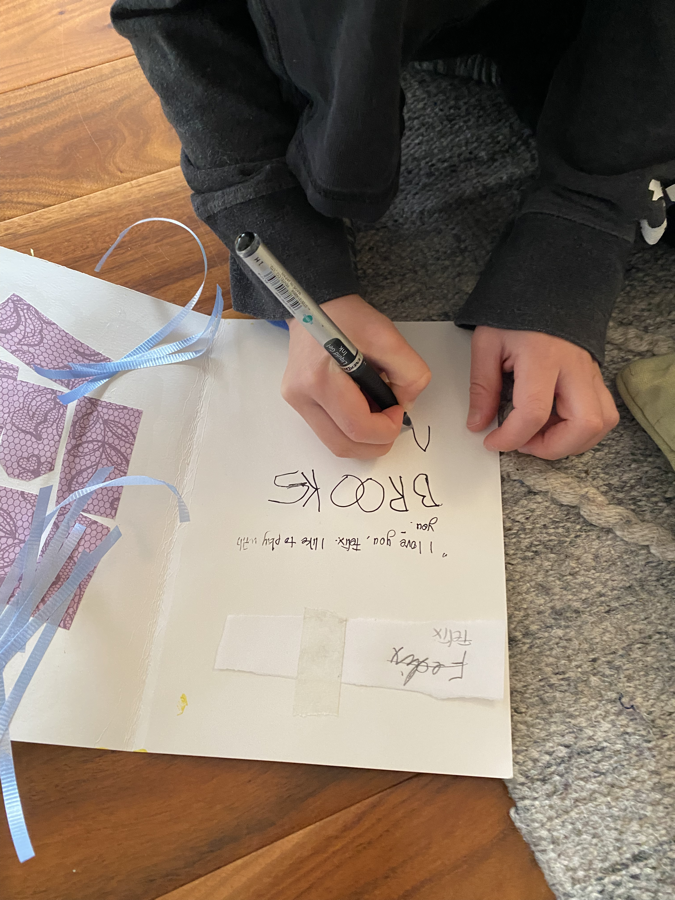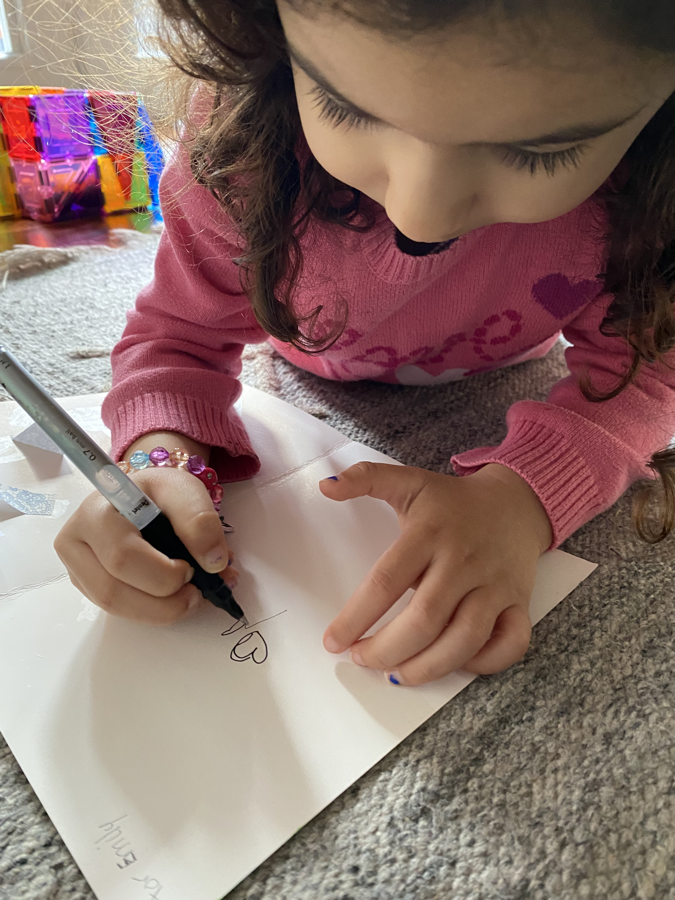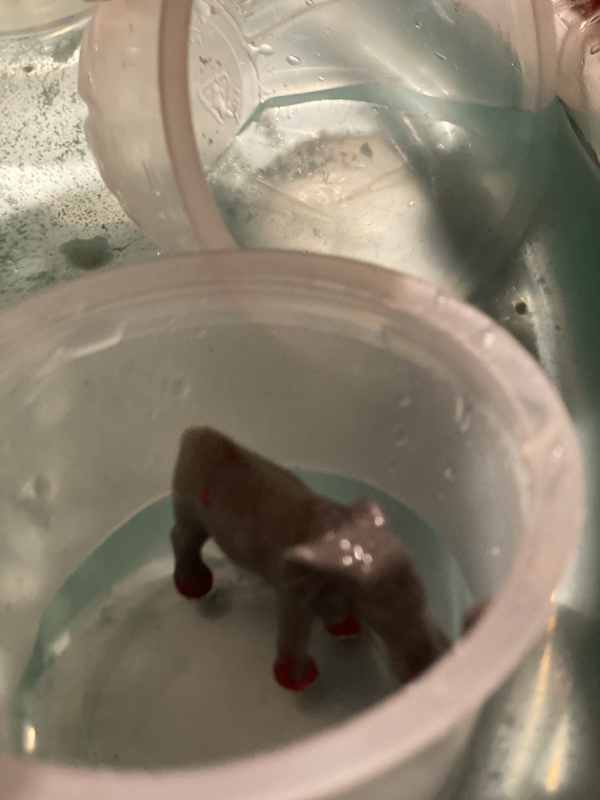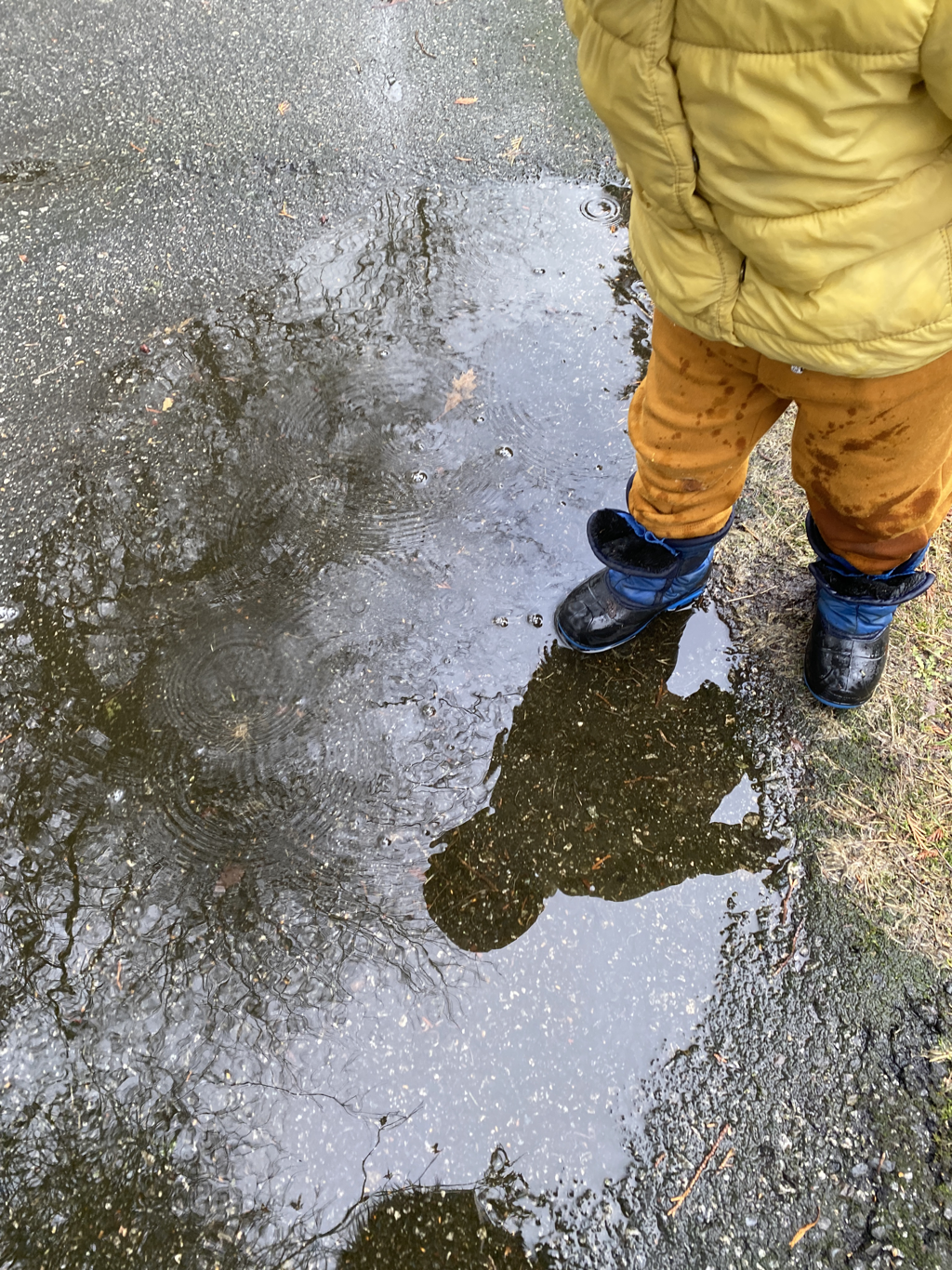|
When we work on our creations we refer to a dose of imagination, paired with our real-life experiences. The freedom to manipulate different materials in an organic and unstructured way allows us for exploration and experimentation. Art hones our cognitive skills like patterning and cause and effect. Through the above learning experience, Elie connects her experience of noticing icicles during the snow days by squeezing the liquid glue out of the bottle to become progressively smaller toward one end. She further mentions, "I'm making icicles". By interpreting her creations, Elie practices her critical thinking skills. She makes connections between what she intends to create or is working on and following through on her thoughts. As we describe and share our experiences making sense of the passing of time, we engages ourselves in not only learning about discovering joy in the seasons, we add details into the whole process. For example. temperatures change and the days get longer or shorter. Yoyo recognizes the warmth of summer is his most favorite season among all for "the heat warms me up". The association of his reply and explanations enhances our cause-and-effect learning abilities, according to new psychology research from the University of Texas at Austin. When we make inferences, we figure things out by applying our own knowledge and experience to the situation at hand. Nurturing ourselves understand when information is shared, will improve our skill in drawing conclusions and making inferences. Inferential thinking is a complex skill that will develop over time and with experience. It is a higher-order skill that is essential for us to develop our levels of comprehension. Having a finely tuned ability to infer is also useful in our prediction and evaluation. We collect fresh snow to be part of our experiment in understanding changes firsthand. Working with his senses allow Hudson to learn and provides him a greater understanding of how the changes work. It can also develop connections in his mind and reinforce learning material in multiple ways. "What changes do we see when the snow melts? " With the above learning experience we experiment with fresh snow to learn about changes through a science concept. We infer if we bring a bucket of snow into a room with a temperature above freezing, mixed with salt, and some warm water the snow will melt. "How long do we think it will take all the snow to melt?" Not only are we trying to observe the changes, but it is also intriguing for us to estimate the time it will take for the snow to melt. There is so much learning that happens during the melting period. We notice less water gets lower inside the bucket, more water forming on the tray. This observation makes us aware of these questions, "When snow melts, where does it go?" and "How does the melting snow influence the rest of the habitat?" A picture is worth a thousand words. We love to visit illustrations as visual inference questions. We practice to tell stories through the use of visual cues. We too encourage ourselves to translate the inference in the illustrations into our narrations. Inference takes place in life in general. We focus on it because we want the thought process to become a habit. Rather than taking anything at face value, we want to question: "What's going on here?" when we notice a situation takes place. When we see litters around us, we attempt to apply our background knowledge, to use what we already know to make assumptions and decisions about what is taking place. It involves us finding clues, reading between the lines, and understanding what the situation does not explicitly state. For us to make predictions, to summarize, to generalize, or to draw conclusions, we need to be able to make inferences, to understand what is going on behind the scenes in a story. In the meantime, Children & Friends wishes everyone a wonderful new year 2023!
Kindest, Children & Friends.
0 Comments
Leave a Reply. |
No part of this publication may be reproduced, distributed, or transmitted in any form or by any means, including photocopying, recording or any other electronic or mechanical methods, without the prior written permission of the publisher.
Archives
July 2024
|
